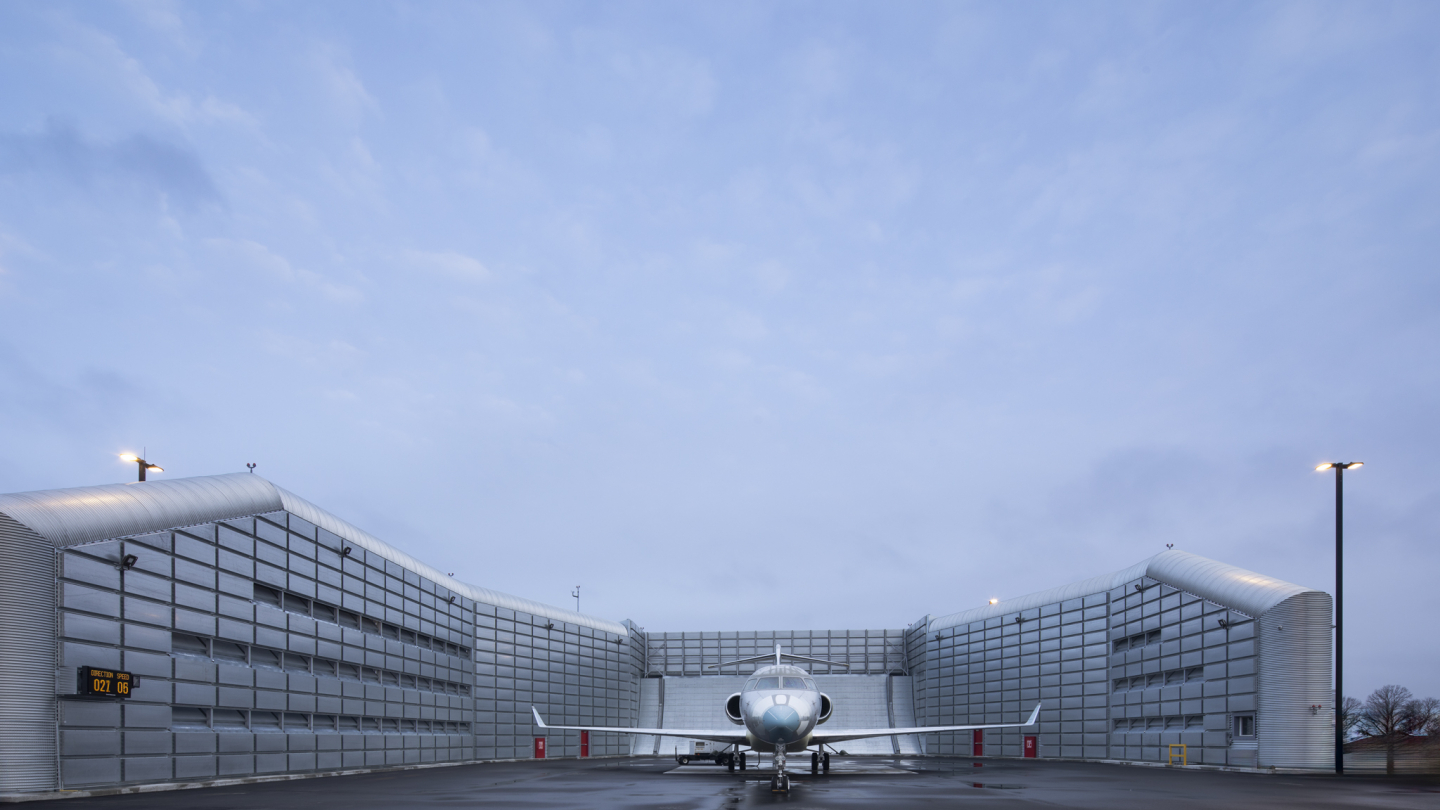Our approach to the design of the manufacturing facility aimed at an in-depth understanding of the client’s core business and current operational challenges. Taking this as a point of departure, we identified three primary design challenges and opportunities: merging the scalar and programmatic requirements of two seemingly dichotomous programs–office space and aircraft manufacturing, characterized by the large extents of the distinctive transonic wing design, negotiating through the challenging site and Transport Canada zoning requirements associated with the close proximity to runway 05-23, the busiest in Canada, and creating architecture that would challenge the typical aircraft hangar typology, being cold and impersonal, and fostering a human scale atmosphere and culture of collaboration through program adjacencies and natural light.


The exterior façades break away from the typical monotony of horizontal strip windows and propose a series of barcode-like vertical strips of translucent polycarbonate and complimentary ones of metal panels. The material shift to translucency is used as an intuitive wayfinding strategy. While providing ample diffused natural light to the production floor, single strip translucent panels are aligned with glass doors at exit corridors. This functional and dynamic proposal of massive spans, limited by functions of straight lines and fixed aircraft proportions, is yet designed for people.
To learn more about this project, consult the press release.
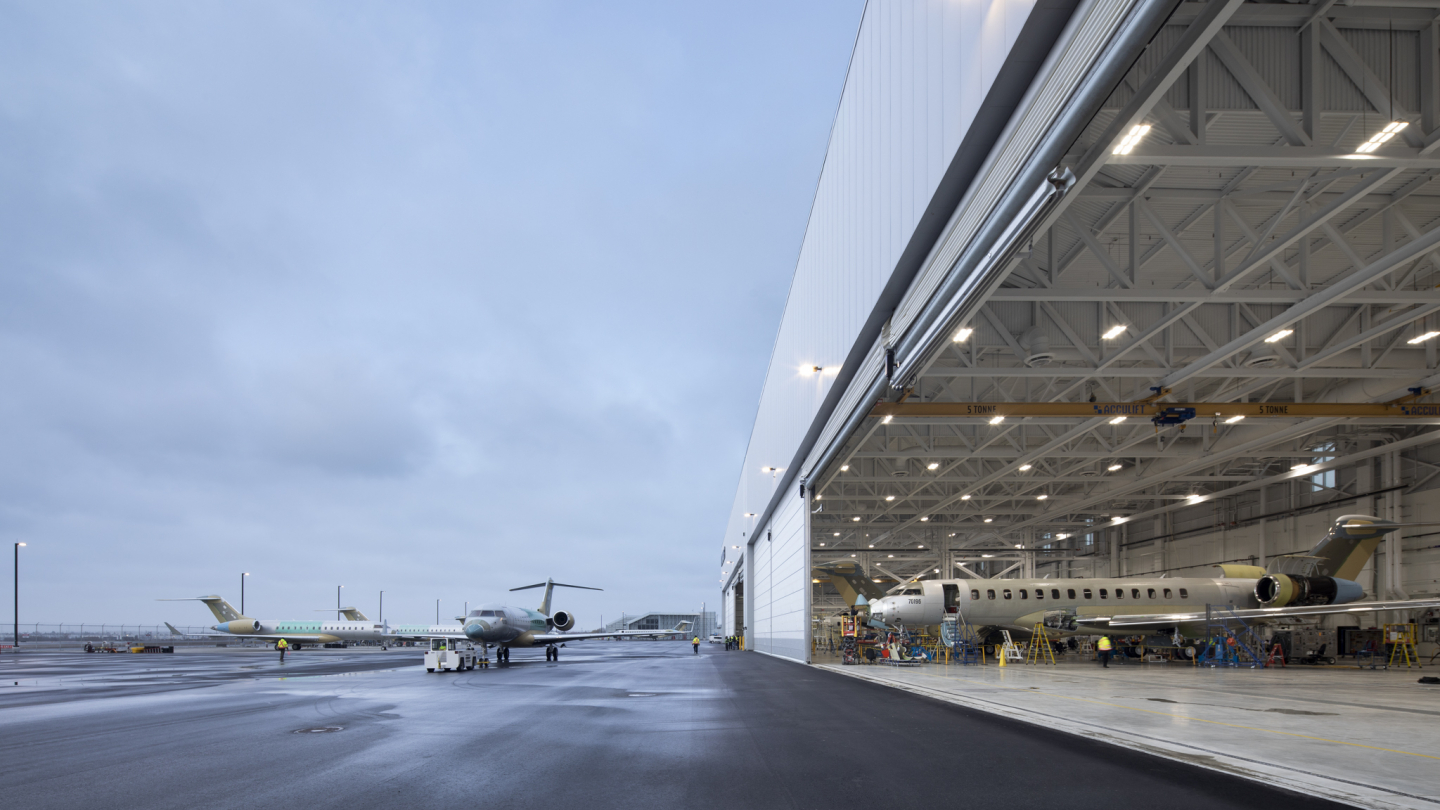
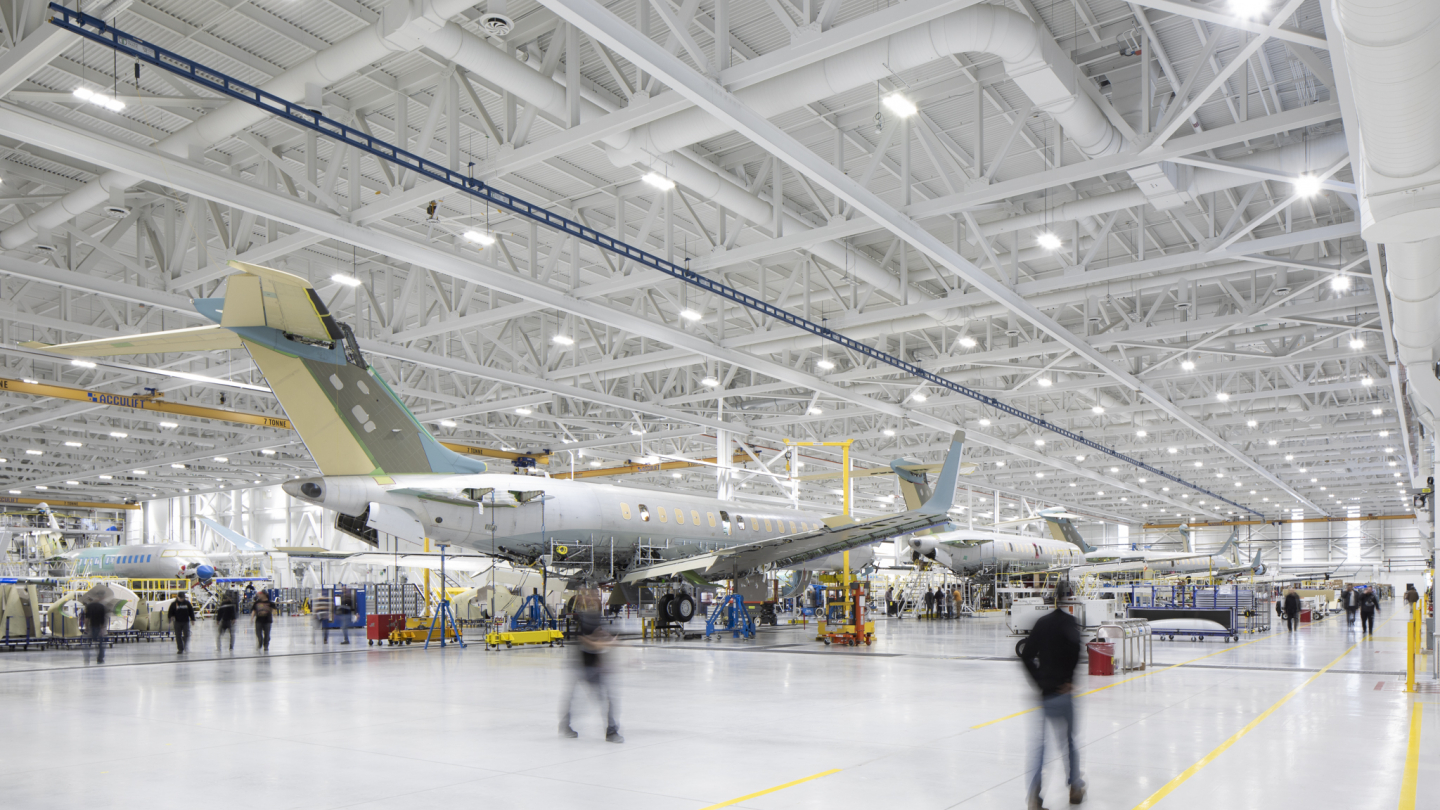
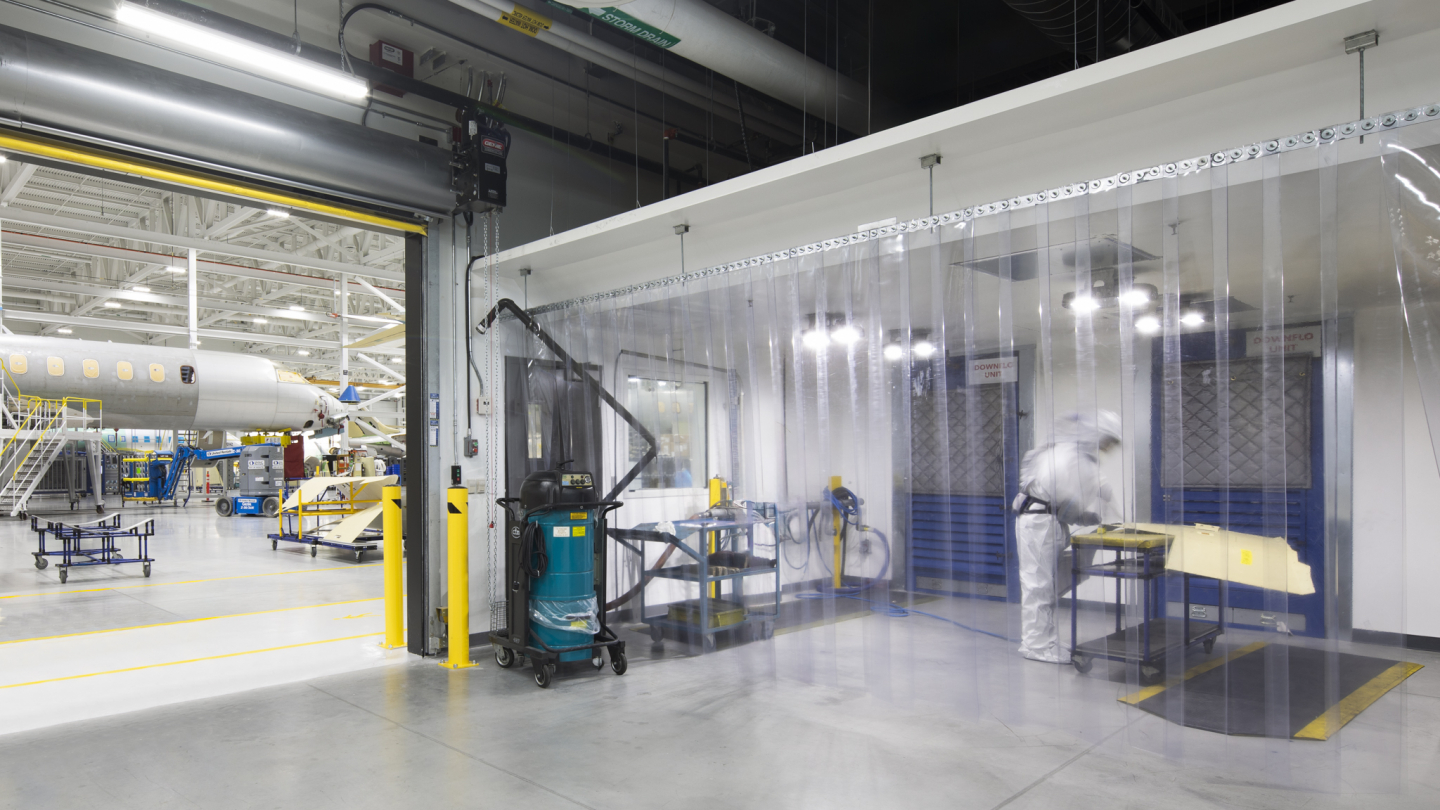
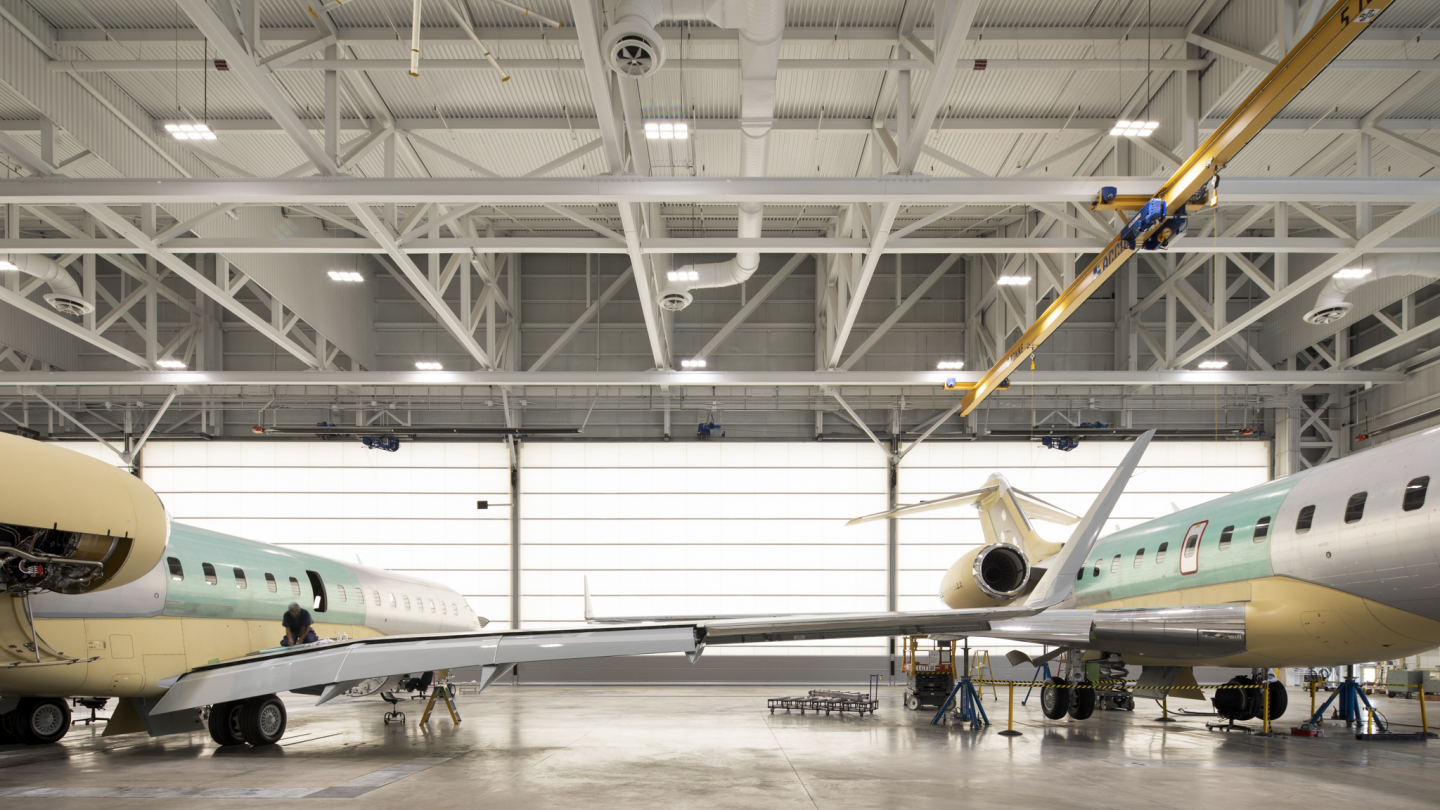

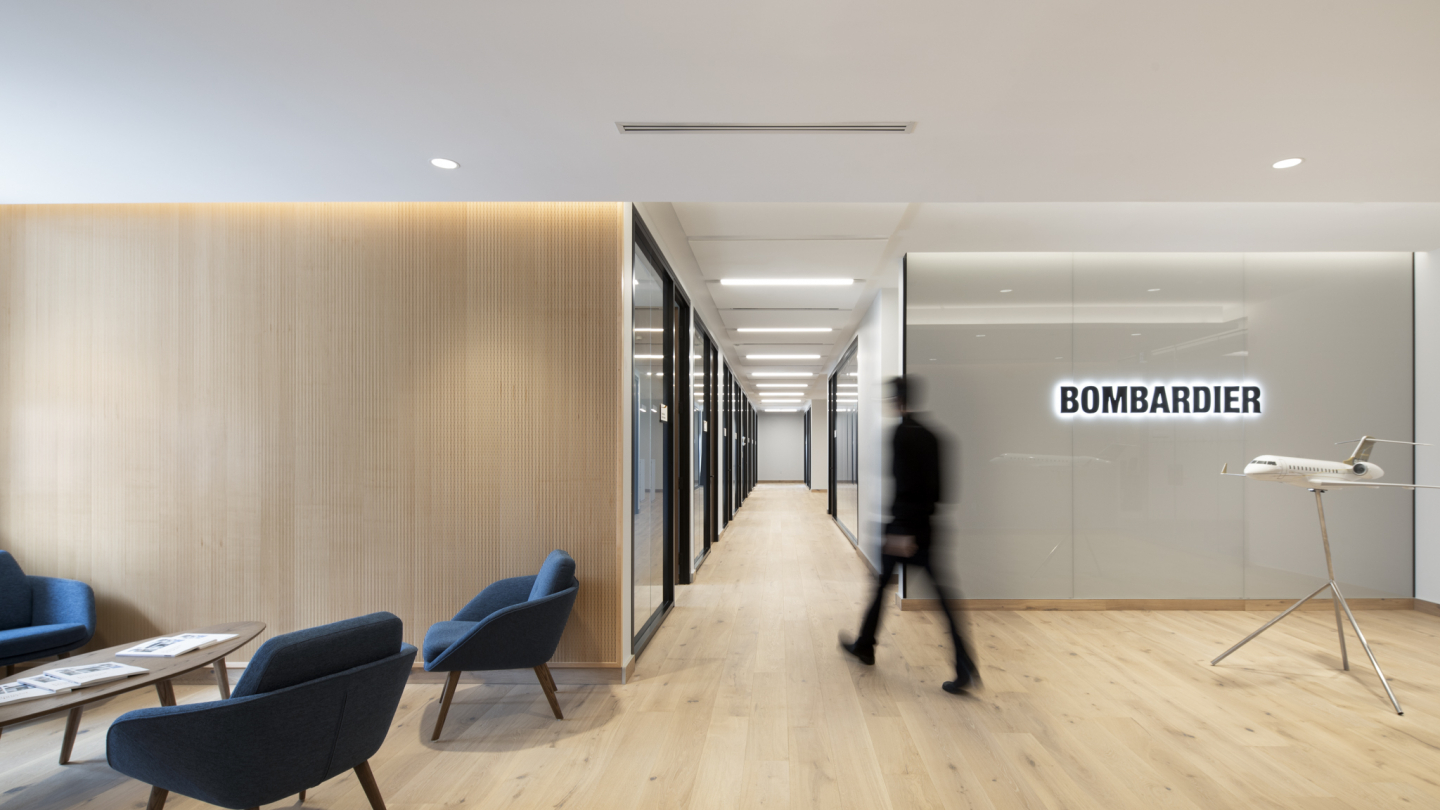
Photo Credit : Adrien Williams
